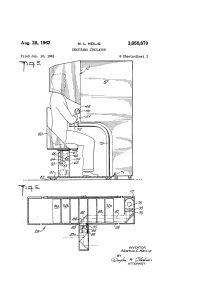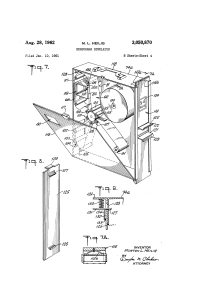This week marked a big step in terms of milestones for virtual reality with the launch of New York Times VR experience.
Once upon a time In the 1960’s, a patent titled Sensorama Simulator was filed by a cinematographer Morton Heilig. His invention was perhaps the first of its kind to provide an apparatus to simulate a desired experience by developing sensations in a plurality of the senses.
According to the patent abstract, it is also an object of the invention to provide an apparatus for simulating an actual, predetermined experience in the senses of an individual. His idea was a novel one that attempted to solve a problem faced by educators.
It has taken us a good 50 plus years to finally bring Mr. Morton’s vision into tangible products that have some fan following.
The Patent abstract suggests that a basic concept in teaching is that a person will have a greater efficiency of learning if he can actually experience a situation as compared with merely reading about it or listening to a lecture. For example, more can be learned about flying a supersonic jet airplane by actually flying one, or a student would understand the structure of an atom better through visual aids than mere word descriptions. Therefore, if a student can experience a situation or an idea in about the same way that he experiences everyday life, it has been shown that he understands better and quicker, and if a student understands better and quicker, he is drawn to the subject matter with greater pleasure and enthusiasm. What the student learns in this manner he retains for a longer period of time.
For a minute, try to imagine all those courses that you had to take as a part of undergraduate or graduate classes. How many of these are you really applying in your day-to-day work? I must admit that as a professional, one is always trying to perform his or her’s duties in an ethical fashion. It is perhaps disheartening to see the multitude of headlines where corporate interests have sidestepped ethical decision-making.
With the advent of Virtual Reality based platforms, content can actually be created to educate folks on ethical choices in decision making while they are attempting to solve business problems. Simulation based education will help in retaining that knowledge for longer periods of time. It will not be surprising for me to see a whole slew of VR products that corporations can offer to their new employees as a part of he orientation program. There is also an opportunity to integrate such VR based simulation content into business ethics class work at the leading universities and MBA Classes that provide new leaders to our society. I would love to hear back from those content developers that are already working on education based simulations.
I’m sure Mortin’s 1960 vision is soon to be fulfilled!



Be the first to comment on "Sensorama in 1960s to NYTimes VR"